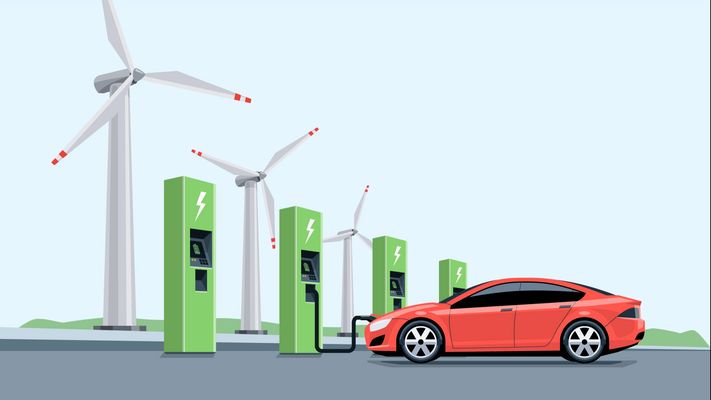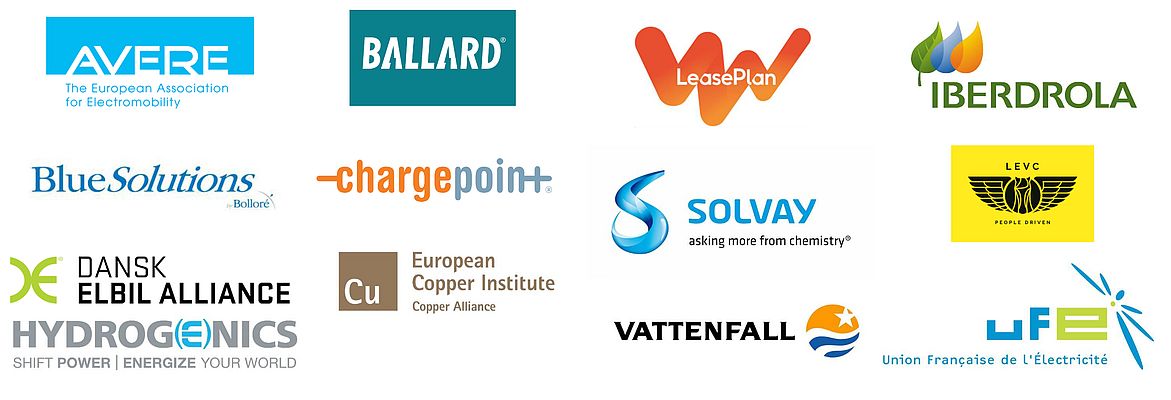Representing the zero-emission mobility industry, thirteen companies see the second part of the ‘Europe on the Move’ mobility package announced for November as a unique opportunity for the European Union to once again lead the shift to decarbonise vehicles. By proposing an ambitious car and van CO2 regulation for post 2020, the EU would drive jobs, growth and innovation across the economy.
The EU has agreed a long-term vision that should drive emissions reductions and has signed the Paris Agreement which requires signatory countries to limit global temperature rise by cutting overall emissions by 80 to 95 percent by 2050. In order to achieve this, all light duty vehicles must be zero emission by 2050. As vehicles stay an average of 15 years in the market, 100% of sales need to be zero emission by 2035. On the basis of this, the governments of France, the UK, the Netherlands, Norway and Austria have publicly announced the phasing- out of combustion engines well before 2050. To help make this happen and to accelerate Zero Emission Vehicle sales the EU needs to set a 2-fold policy in the November package:
- First, to accelerate Zero Emission Vehicles deployment, the EU needs to set a mandatory sales target for 2025 and 2030. The transport sector accounts for 33% of final energy consumption in the EU. It continues to struggle to reduce CO2 emissions (emissions in 2014 were 300 megatons greater than in 1990) and oil dependency (the EU imports 87% of crude oil and road transport consumes 47% of the total) and to improve energy efficiency. Combustion-based transport also negatively affects urban air quality: 5.4% of deaths in Europe are due to air pollution. Zero Emission Vehicles contribute towards providing the clean, energy-efficient and affordable transport needed to reduce emissions.
- Second, the EU should set ambitious CO2 targets for 2025 and 2030 for cars, vans, and in 2018 also for lorries and busses. CO2 targets for cars and vans have proven to be the single most important driver for car manufacturers to produce cleaner cars. They form the basis for technology neutral emission reductions in the road transport sector. CO2 emission targets for road vehicles should be set in such a way that emission reductions of 9% annually are achieved by 2030, the levels needed to meet the Paris Agreement goals.
A mature technology
Zero Emission Vehicles are now a mature technology, ready to scale up to mass market. This is confirmed by many car makers’ recent announcements that they intend to widen their Zero Emission Vehicle offers, i.e. battery electric and fuel-cell vehicles. The current range of Zero Emission Vehicles is between 200 and 450 km, with the total cost of ownership expected to fall below the internal combustion engine equivalent by early 2020s. A significant condition for mass market uptake is a high-power charging network, as well as supporting hydrogen refuelling infrastructure, along and beyond the TEN-T Core Network. Building a sufficiently dense normal and fast charging network enabling the parking and charging of vehicles also drives the deployment of shared, more efficient and connected mobility, which in turn enhances the electrification of vehicles.
Zero-emission mobility
By setting a Zero Emission Vehicle target, in combination with very ambitious 2025 and 2030 CO2 standards driving vehicle electrification, the EU would support a growing domestic zero- emission mobility industry with high innovative potential which would return the EU to being among the leaders in this field. Recent studies suggest that promoting the shift to electric vehicles would lead to a 1% increase in EU GDP, and create up to 2 million additional jobs by 2050 (850.000 by 2030) in the wider economy due to an increased automotive suppliers value chain and higher demand on energy supply. In order for Europe to lead in the uptake of electric vehicles it will be crucial to drive innovation efforts towards the next generation of batteries and fuel cells, coupled with policy encouraging their performance and the development of EU-based technology know-how (e.g. energy density, better use of raw material and chemicals, lower carbon foot print, safety, recycling, refuelling/charging speed).
Without creating a sufficiently large integrated market for Zero Emission Vehicles in Europe, growth and value added will remain confined to other world regions. China has already announced a Zero Emission Vehicle mandate from 2019 onwards, aiming at 20% of all sales by 20256. The EU now has an excellent opportunity to ensure it does not fall behind by equally introducing a quota – studies have indicated that a similar quota of around 20% by 2025 would be appropriate.
This is an opportunity for the European Union to lead boldly during this transition with many uncertainties by sending a strong signal to European industry and to European citizens. Representatives of the zero-emission mobility industry remain committed to working with the EU to ensure that the ‘Europe on the Move’ mobility package unleashes its full potential.
By Dusan Jakovljevic, Policy Director EEPI, Brussels, Belgium





























































